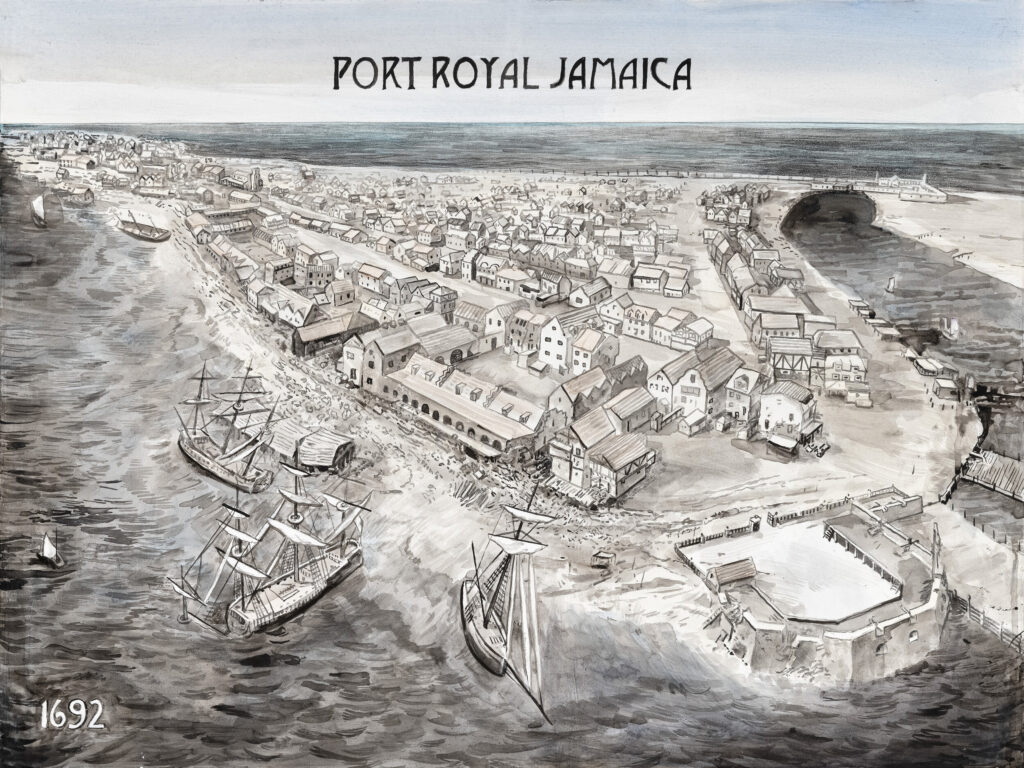Jamaica
Earthquake 1692

Port Royal was one of the wealthiest and most important ports in the Caribbean. It was dubbed “one of the wickedest places on Earth” in 17th century Jamaica. It was known as a destination for pirates, who lived and did business in the city. In 1692, an earthquake hit Jamaica which caused two thirds (2/3) of Port Royal to sink into the sea! An entire chunk of the island just disappeared…changing the shape on the map. The disastrous event was thought to be punishment (divine retribution) from God for the wickedness of the city. Even today, it is believed that the Caribbean Sea, in the Port Royal region, hides treasures of gold coins and doubloon, buried and still undiscovered. Port Royal was heavily fortified by the British, with beautiful, strong brick houses which represented wealth. I would have loved to see the architecture of the time, the pirates and Buccaneers roaming the streets, trading while spinning tall tales, the wealthy merchants dressed in the finest of fashion, gems, gold, pearls and other jewels on display…. I imagine the majestic ships in the port, each uniquely distressed by its own epic adventures a’sea. The movie “The Pirates of the Caribbean”, though not filmed in Jamaica, was based on the historical Port Royal. Paula E.
Port Royal was once the largest city in the Caribbean. It is located in the mouth of Jamaica’s Kingston Harbor. It was founded in 1494 by the Spanish, who called it Caguay, based on the name given to the area by the original Taino inhabitants. The town was captured by the British in 1655, renamed Fort Royal and greatly expanded, becoming the unofficial capital of the island. The town’s reputation as a safe harbor for pirates resulted originally from Governor Edward O’Doley’s 1657 invitation to the Brethren of the Coast (a group of pirates who the Spanish had thrown out of Hispaniola) to make Port Royal their home port, granting them letters of marque to allow them to function as privateers and to contribute to the defense of the Island. For about the next thirty years almost all of the town’s economy was related to various forms of what was known as “the forced trade” or piracy. By 1687, with the British navy better able to defend the island, and the slave trade increasing in economic importance, Jamaica decided that it no longer needed the pirates and passed a anti-piracy laws that led the deaths of many pirates, including the famous female pirate Mary Read. In 1692, an earthquake (and accompanying tsunami) almost entirely destroyed Port Royal, killing nearly half of the city’s population of approximately 6,500. The area was particularly vulnerable to liquefaction due to having been built on sand and low-lying landfill. Attempts to rebuild the city were thwarted by flooding, fires, hurricanes and another devastating earthquake in 1907. Today, the area is sparsely settled, despite attempts at developing it as a tourist site.